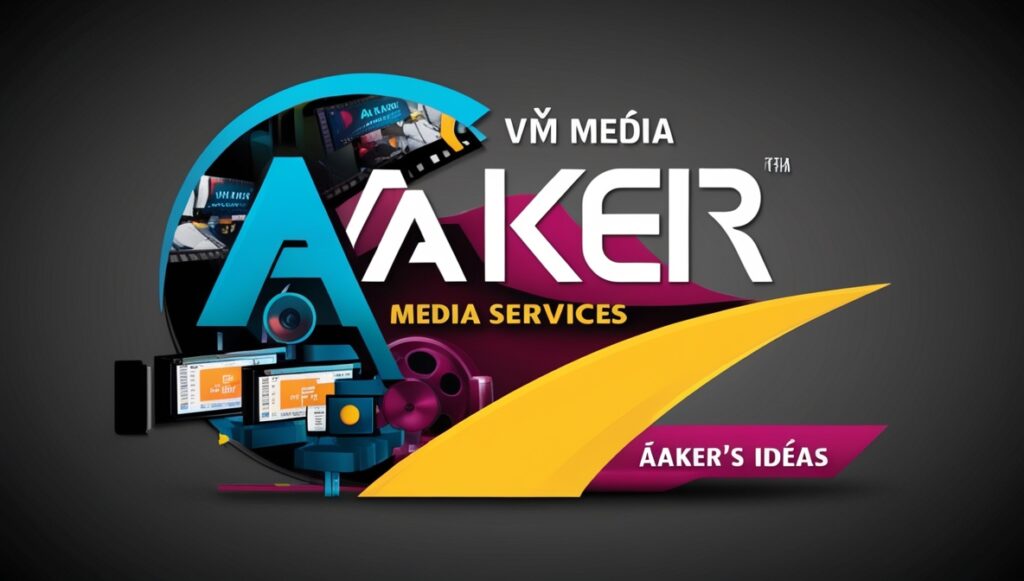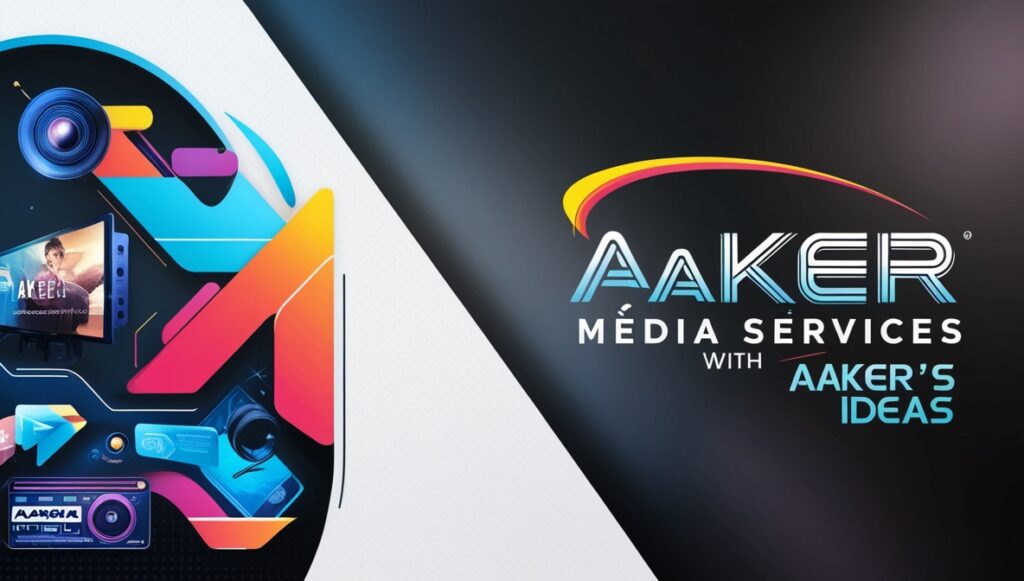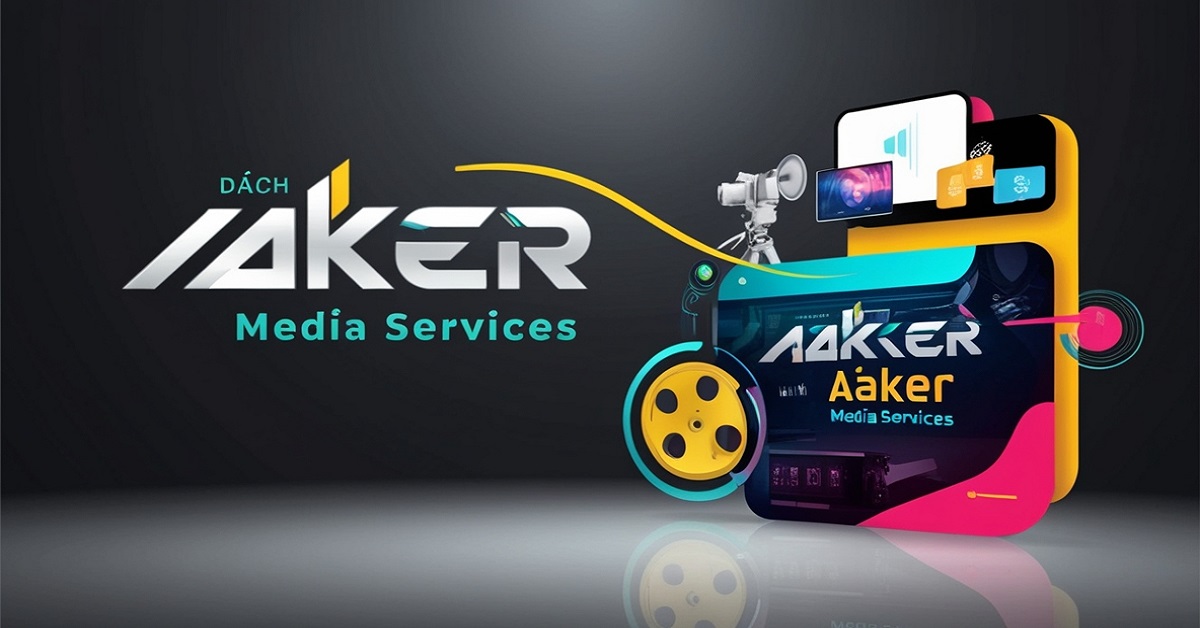Dịch Vụ Media Aaker In a world flooded with media content — TV spots, online ads, influencer marketing, and social media posts — what separates campaigns that resonate from those that fade away? The answer often lies in branding: how well a company crafts its brand equity, maintains consistency, and genuinely connects with its audience. Dịch Vụ Media Aaker (Media Services with Aaker’s Ideas) is a framework that uses the branding principles of David Aaker to inform and improve modern media services. This post explores how applying Aaker’s models can elevate media strategy, enrich audience engagement, build trust, and generate measurable business value.
Who is David Aaker and Why His Branding Framework Remains Crucial

David Allen Aaker, born 1938, is one of the most respected thought leaders in branding and marketing strategy. A former professor at UC Berkeley’s Haas School of Business, he introduced several foundational ideas about brand equity, brand identity, and how brands can build long-term value.
Some of his landmark works include Managing Brand Equity (1991) and Building Strong Brands (1996). He continues to update his frameworks, such as his “Five B’s” model, to adapt branding to volatile, digital-first times.
His framework is especially relevant for media services because it provides structured guidance on how to use media — traditional, digital, interactive — not just to broadcast, but to build brand value, trust, awareness, loyalty, and associations. These are things that media services often overlook when chasing short-term visibility.
The Core of Aaker’s Philosophy: Building Brand Equity
Before diving into practical strategies, it’s important to understand what “brand equity” means in the Aaker model, and why it isn’t just a marketing buzzword.
Key Components of Aaker’s Brand Equity Model
According to multiple sources, Aaker defines brand equity through several interlinked dimensions:
- Brand awareness – how familiar consumers are with a brand.
- Brand loyalty – the strength of a customer’s attachment, repeat purchase behavior, and resistance to switching.
- Perceived quality – how consumers view the quality of a brand’s products or services compared to alternatives.
- Brand associations – all mental connections consumers form with a brand (symbolism, personality, values, visual identity).
- Proprietary brand assets – intangible assets like trademarks, patents, and other unique identifiers that add value.
These elements work together: strong awareness helps associations; associations plus perceived quality influences loyalty; loyalty and proprietary assets contribute to higher long-term value.
Why Brand Equity Matters in Media Services
When media services adopt Aaker’s framework, they shift from merely “getting seen” to building something more substantial — trust, preference, and a sustainable competitive advantage.
Some data points to show why:
- Brands with consistent messaging across channels report 10-20% higher revenue growth than those with inconsistent branding.
- Brands that invest in consistency see 2× the profit gains compared to those frequently changing messaging or visuals.
- In a survey of 14,000 consumers across 14 countries, highly trusted brands were found to be seven times more likely to be purchased. Trust has become as important as quality and value.
These statistics help show that media services that implement Aaker’s ideas aren’t just more pleasant or consistent — they tend to deliver better business outcomes.
Why Consistency is the Cornerstone of Dịch Vụ Media Aaker
“A consistent brand experience… builds trust and helps people know what to expect.” While that may sound obvious, many brands fail here. Media services often juggle many channels — social, TV, radio, print, influencers — and consistency can slip.
What Consistency Means in Practice
Consistency under Aaker’s framework covers:
- Message consistency: The tone, values, promises. Whether an ad is on TV or Instagram, the brand’s voice should feel familiar.
- Visual consistency: Logos, colour palettes, font styles, styling of imagery.
- Value consistency: The core mission, promise, or benefit offered by the brand should align across all media services.
- Timing & rhythm: Frequency of messages, pacing of campaigns across platforms, coordinated roll-outs.
Real Problems When Consistency is Ignored
Some common breakdowns include:
| Issue | Example | Consequence |
|---|---|---|
| Tone mismatch | A brand is serious & formal in TV spots, but casual & slang-laden on social media | Confuses audience; weakens trust |
| Visual mismatch | Brand uses premium visuals offline, but low-res, inconsistent images online | Undermines perceived quality |
| Message drift | Campaigns don’t refer back to core values; new product messages contradict older ones | Dilutes brand identity; reduces loyalty |
Data on the Impact of Consistency
- Brands with consistent branding across all channels can see 10-20% growth in revenue compared with less consistent peers.
- 90% of consumers expect a consistent brand experience across channels. Nearly half of respondents in some studies are frustrated when offline and online experiences don’t align.
- Only about 30% of brands use their branding guidelines regularly; some brands don’t have clear guidelines at all. That creates large gaps in consistency.
These data make a strong case: if your Dịch Vụ Media Aaker (media services with Aaker’s ideas) program does not prioritize consistency, you’re leaving money, trust, and long-term advantage on the table.
Mapping Aaker’s Ideas to Today’s Media Landscape
Media services are not mono-channel anymore. To apply Aaker’s ideas well, you need to understand how different types of media impact brand equity and how to use them in complement.
Traditional Media: TV, Radio, Print
- Strengths: Wide reach, trust, legitimacy. For many demographics, TV and radio still carry prestige and high perceived trust.
- Weaknesses: Harder to measure directly; more expensive; slower feedback loops.
How to apply Aaker’s ideas here:
- Ensure perceived quality: invest in production values, scripting, casting.
- Reinforce associations: use symbols, jingles, or visual motifs that show up later in digital media.
- Maintain core messages: If your brand promise is “trusted family health”, that must come through in radio, print, and TV alike.
Digital Media: Social, Search, Online Ads
- Digital media allows speed, targeting, and adaptability. But the danger is fragmentation: many messages, many formats.
Best practices:
- Use the same value proposition and brand personality across social media, display ads, video ads.
- Retain visual identity: consistent logo usage, colours, fonts.
- Use audience feedback to measure what resonates — test different creatives but stay within the same “brand frame”.
Interactive Media: Live Streams, Q&A, Websites
- This kind of media excels in direct engagement, two-way communication, and authenticity.
Tips:
- Ensure personalization does not lead to message drift. Even when adapting to user input, the core promise, brand voice, and identity remain stable.
- Use interactive sessions to reinforce loyalty: community building, real-time dialogue, transparent values.
Influencer Marketing: A Modern Channel, but Risky Without Discipline
- Influencers bring access, voice, credibility — but can dilute brand if not managed well.
To use influencers while preserving brand equity:
- Choose influencers whose values and style match your brand identity.
- Provide clear briefs about tone, core message, visual style.
- Monitor consistency — campaign assets should align with your brand’s other media touchpoints.
Data-Driven Insights: Measuring Brand Equity in Media Campaigns
You can’t improve what you don’t measure. Dịch Vụ Media Aaker demands metrics and analytics that map to the components of brand equity.
| Metric | What it Measures | How to Use It |
|---|---|---|
| Brand Awareness | Recognition, recall, top-of-mind | Surveys; online search volume; ad recall studies |
| Brand Associations | Values people connect to the brand; perceived personality | Qualitative research; sentiment analysis; social listening |
| Perceived Quality | How good people think your product/service is vs competitors | Reviews, ratings, product tests, customer feedback |
| Brand Loyalty | Repeat customer behavior; churn/retention | Sales data; customer lifetime value; NPS (Net Promoter Score) |
| Trust | Belief in the brand’s promises, reliability, integrity | Trust scores (e.g. Edelman Trust Barometer); surveys; customer reviews |
Case Study: Trust & Purchase Likelihood
For example, the 2021 Edelman Trust Barometer found that in a survey across 14 countries (14,000 consumers), highly trusted brands were seven times more likely to be purchased. So trust — which is reinforced through consistent, quality media services — directly ties into revenue potential.
Case Study: Revenue Growth Via Consistency
Lucidpress surveyed 452 professionals and found that consistent messaging increased brand revenue by over 20% for 32% of those brands. Marq reports that businesses with consistent branding tend to experience up to 20% greater overall growth and 33% higher revenue compared to those with struggling or inconsistent branding.
Practical Guide: Applying Aaker’s Ideas to Your Media Strategy
Here’s how to translate theory into action. Use this as a blueprint when planning or evaluating your media services with Aaker’s ideas.
Step 1: Audit Your Brand Assets & Identity
- List your current media channels (TV, radio, social, print, influencer, interactive).
- Assess consistency in logos, visuals, type-face, color, tone of voice, message.
- Identify gaps: where is your message inconsistent? Where visuals or tone drift?
Step 2: Define Your Core Brand Elements
- Clarify your brand promise (what you promise customers).
- Define your values, personality, the associations you want people to have.
- Set standards for perceived quality.
Step 3: Establish Guidelines & Training
- Create or refine brand guidelines: message tone, visual identity, usage across channels.
- Educate internal teams and external partners / influencers.
- Make it easy for anyone creating media to access guideline resources.
Step 4: Plan Media Campaigns Holistically
- When launching a campaign (new product, seasonal promotion, brand refresh etc.), plan how each media type contributes to awareness, loyalty, trust.
- Ensure that each message is consistent but adapted for the medium (shorter copy for radio, visual storytelling for video, interaction for social media).
Step 5: Use Data to Monitor & Adjust
- Define metrics (see table above) before launching.
- Use feedback loops: social media listening, surveys, ad-performance analytics.
- Adjust creatives, messages, channels as needed — but always stay within brand boundaries.
Step 6: Budget for Long-Term Brand Equity
- Don’t overspend on visibility only; invest in consistency, quality, content that reinforces associations and trust.
- Recognize that performance metrics (clicks, views) are important — but long-term metrics (loyalty, trust, NPS) often drive more value over time.
Common Challenges & How to Overcome Them
Even companies that want to follow Aaker’s ideas run into obstacles. Here are common ones and how to address them.
| Challenge | Why It Happens | Solution |
|---|---|---|
| Fragmented teams or agencies | Different vendors handling TV, social, influencers separately leads to drift | Centralized brand management / creative director; unified guideline documents |
| Pressure for novelty each campaign | Desire to appear fresh causes inconsistency | Have a creative innovation within guardrails; allow new ideas but within brand identity |
| Rapid change in media trends | Platforms change, content formats shift | Regular updates to guidelines; agile feedback; pilot testing of new formats |
| Limited budget for high quality | Low production values can damage perceived quality | Prioritize quality in touchpoints with largest reach or highest trust; invest in key content pieces |
Future Trends: Where Media Services and Aaker’s Ideas Intersect

To stay ahead, it helps to anticipate how media services will evolve — and how Aaker’s framework can accommodate or lead that evolution.
- Personalization & AI-Driven Media
AI tools allow for more customized experiences. But personalization must be built on consistent brand identity. For example, chatbots, dynamic ads, or tailored content should still use the same tone, visuals, and core promise as more traditional media. - Purpose & Social Responsibility
Modern consumers often expect brands to take stands on social issues, environment, and ethics. Aaker’s more recent writing emphasizes that relevance and image aren’t enough; the brand must also reflect meaningful values. - Omnichannel Integration
Seamless experiences across offline and online — for example, in-store, social, mobile, and web — are more expected than ever. Brands that unify message and identity across these will build stronger brand loyalty and awareness. - Interactive / Immersive Media
AR/VR, live experiences, interactive video, and UGC (user-generated content) will grow. These offer great chance for engagement; if brand voice, message, and value are strong, these channels reinforce trust and loyalty. - Measurement & Analytics Evolution
The tools to measure brand equity are becoming more sophisticated. Sentiment analysis, AI for social listening, models that tie brand metrics to financial performance (e.g., revenue, margin, premium pricing) are improving. Adopting these improves decision-making and justifies investment in brand equity.
Call to action: Take a look at your next or current media campaign. Audit it using the steps above. Are your messages consistent? Do you have clear metrics for what trust, loyalty, and perceived quality mean for your brand? If not, that’s your opportunity for differentiation.
If you like, I can also pull in regional case studies (e.g. from Pakistan or Southeast Asia) to make it more locally relevant. Would you prefer that?
FAQs About Dịch Vụ Media Aaker
1. What is Dịch Vụ Media Aaker and how does it work?
Dịch Vụ Media Aaker is a media strategy approach that applies David Aaker’s branding principles to build brand equity and audience trust across all media channels.
2. Why is David Aaker’s brand equity model important for media services?
Aaker’s model highlights brand awareness, loyalty, perceived quality, and associations—key factors that help media campaigns create lasting brand value.
3. How can businesses apply Aaker’s ideas to digital and social media campaigns?
Companies can ensure consistent messaging, visuals, and values across social platforms while using data-driven insights to strengthen engagement and trust.
4. What role does message consistency play in building brand trust?
Consistent tone, visuals, and messaging across all media touchpoints reinforce reliability and make customers more likely to trust and stay loyal to a brand.
5. How can companies measure the success of Dịch Vụ Media Aaker strategies?
Brands can track key metrics such as brand awareness, audience sentiment, loyalty rates, and campaign ROI to evaluate the impact of Aaker-based media strategies.
Conclusion: Strengthening Brand Equity Through Aaker’s Lens in Dịch Vụ Media
Dịch Vụ Media Aaker — media services with Aaker’s ideas — is not just a catchy phrase. It encapsulates a disciplined approach that combines:
- Building brand equity (awareness, loyalty, perceived quality, associations, proprietary assets)
- Maintaining consistency across channels and over time
- Using data to measure, adjust, and ensure real value
- Designing media strategy holistic enough to include traditional, digital, interactive, and influencer channels
If you want a media strategy that does more than chase views — one that builds trust, loyalty, and long-term business strength — then embedding Aaker’s ideas into your media services is the way forward.









